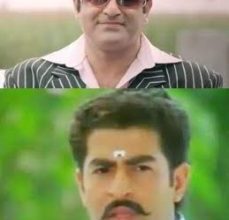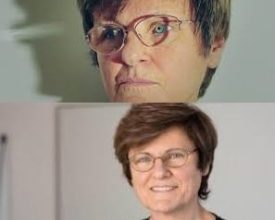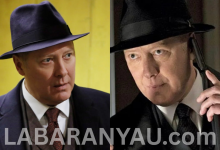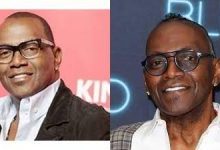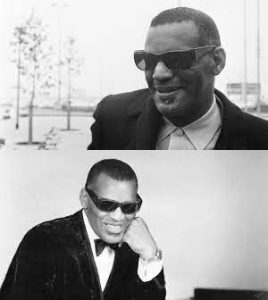
Ray Charles Biography
Senior Ray Charles Robinson (September 23, 1930 – June 10, 2004) was a singer, songwriter, and pianist from the United States. He was frequently referred to by his contemporaries as “The Genius” and is recognized as one of the most recognizable and influential vocalists in history. He favored the moniker “Brother Ray” when referring to friends and other musicians. Charles lost his sight as a toddler, possibly from glaucoma.
By fusing blues, jazz, rhythm and blues, and gospel music traditions into the music he recorded for Atlantic Records in the 1950s, Charles helped to establish the soul music genre. With his crossover success on ABC Records, particularly with his two Modern Sounds albums, he helped to integrate country music, rhythm and blues, and pop music during the 1960s. Charles was one of the first black performers to receive artistic control from a major record label while he was with ABC.
First of his three No. 1 successes in his career on the Billboard Hot 100, Charles’ 1960 smash “Georgia on My Mind” was released. His first album to reach the top of the Billboard 200 chart was Modern Sounds in Country and Western Music, released in 1962. With 44 hits on the US R&B singles chart, 11 singles on the Hot 100 singles list, and 2 singles on the Hot Country singles charts, Charles had multiple singles that reached the Top 40 on various Billboard charts.
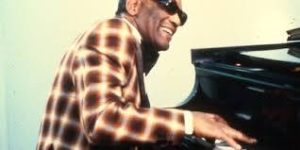
Charles listed Nat King Cole as his main inspiration, while Louis Jordan and Charles Brown also had an impact on his music. Quincy Jones and him were lifetime friends who occasionally collaborated. Ray Charles downplayed the idea that he was “the only true genius in show business,” as described by Frank Sinatra. “This may sound sacrilegious, but I think Ray Charles was more important than Elvis Presley,” stated Billy Joel.
Charles was awarded the Polar Music Prize, the National Medal of Arts, and the Kennedy Center Honors for his contributions to music. In 1986, he was one of the first individuals to be inducted into the Rock & Roll Hall of Fame. He has received 10 of his records into the Grammy Hall of Fame, and 18 Grammy Awards, including the 1987 Grammy Lifetime Achievement Award (5 posthumously), and the Grammy Lifetime Achievement Award. Charles was placed No. 10 on Rolling Stone’s list of the top 100 artists of all time and No. 2 on their list of the top 100 singers. He received inductions into both the Black Music & Entertainment Walk of Fame and the Country Music Hall of Fame in 2022.
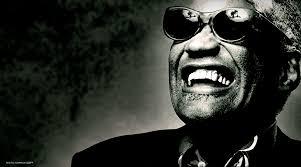
Ray Charles’s Early life and education
On September 23, 1930, Charles was born in Albany, Georgia. He was born in Greenville, Florida, to laborer Bailey Robinson and laundress Aretha (or Reatha) Robinson (née Williams).
Aretha’s mother died when she was a young girl. Her father was unable to raise her. Her father’s coworker Bailey took her in. Aretha was formally adopted by the Robinson family—Bailey, his wife Mary Jane, and his mother—and assumed the last name Robinson. A few years later, Aretha, then 15 years old, got pregnant through Bailey. She departed Greenville late in the summer of 1930 to be with family in Albany during the impending scandal. Ray Charles was born, and she and the baby Charles went back to Greenville. After losing a son, Aretha and Bailey’s wife helped raise Charles.
After leaving Greenville and the family behind, the father remarried another woman. Charles had a brother named George by the time he turned one. Nobody was able to recall George’s father in the future.
Charles had a strong bond with his mother and later recounted how, despite her ill health and hardships, her tenacity, independence, and pride served as a model for him.
Early on, Charles developed a fascination with machinery and would frequently see his neighbors repairing their cars and farm equipment. At the age of three, Wylie Pitman played boogie woogie on an antique upright piano at Red Wing Cafe, igniting Charles’ interest in music. Pitman later taught Charles how to play the piano. The Red Wing Cafe always welcomed Charles and his mother, and they even moved there when they were having financial difficulties. To lessen the stress on their mother, Pitman would also take care of Ray’s younger brother George. When George was four years old, he unintentionally drowned in his mother’s laundry tub.
Charles began to lose his vision at the age of four or five, and by the time he was seven, he was completely blind, most likely due to glaucoma. Aretha Robinson, who was ignorant, destitute, and grieving the loss of her younger son, used her connections in the neighborhood to find a school that would take a blind African-American student. Despite his early objections, Charles went to school from 1937 until 1945 at the Florida School for the Deaf and the Blind in St. Augustine.
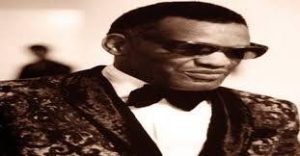
At school, Charles furthered the development of his musical talent and received instruction in the classical piano works of Bach, Mozart, and Beethoven. Using braille music is a challenging process that necessitates learning the left-hand motions by reading braille with the right hand and the right-hand movements by reading braille with the left hand, then merging the two parts. His teacher, Mrs. Lawrence, taught him how to use braille music.
Charles was 14 when his mother passed away in the spring of 1945. He was shocked by her passing; he later referred to the passing of his mother and brother as “the two great tragedies” of his life. Charles decided to skip school following the funeral.
Ray Charles Career
1945–1952: Florida, Los Angeles, and Seattle
Charles traveled to Jacksonville after finishing school to live with Charles Wayne Powell, a friend of his late mother’s. For more than a year, he provided piano accompaniment for bands at the Ritz Theatre in LaVilla, earning $4 per performance (US$44 in 2022 value). He joined Local 632 of the American Federation of Musicians in the hopes that it would help him find employment. Since he didn’t have a piano at home, he was able to practice on Union Hall’s piano, where he picked up piano licks by imitating the other musicians.
In Jacksonville, he began to establish a reputation as a gifted musician, but the gigs did not come quickly enough for him to establish a solid identity, so at age 16, he relocated to Orlando, where he lived in extreme poverty and frequently went without food. It was challenging for musicians to obtain work because there were no longer any “G.I. Joes” to amuse people. After all, World War II had ended.[Reference needed] Charles eventually began to compose arrangements for a pop music group, and in the summer of 1947, he made an unsuccessful attempt to get a piano audition with Lucky Millinder and his 16-piece band.
Charles relocated to Tampa in 1947 and worked two jobs there, one of which was as a pianist for Charles Brantley’s Honey Dippers.
Nat King Cole was Charles’ role model throughout his early career. His first four recordings, “Wondering and Wondering”, “Walking and Talking”, “Why Did You Go?” and “I Found My Baby There” were purportedly made in Tampa, however, some discographies state he made them in Miami in 1951 or Los Angeles in 1952.
Although Charles had always provided piano accompaniment for others, he was eager to start his band. He decided to go from Florida to a big city, and in March 1948, he followed his friend Gossie McKee to Seattle, Washington, believing that the biggest radio hits originated from northern cities since he found Chicago and New York City to be too enormous. Under Robert Blackwell’s guidance, he made friends with the 15-year-old Quincy Jones there.
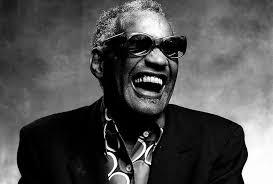
The McSon Trio—named for McKee and Robinson—began performing at the Rocking Chair from 1 to 5 a.m. with Charles on piano, McKee on guitar, and Milton Garred on bass. Some of the first known photographs of Charles are of this trio, taken for publicity purposes. He and his band recorded “Confession Blues” in April 1949, and it became his first big hit, climbing to the number two slot on the Billboard R&B chart.
Charles continued to work at the Rocking Chair and also arranged tunes for other musicians, such as Dizzy Gillespie’s “Emanon” and Cole Porter’s “Ghost of a Chance”. Following the commercial success of his first two songs, Charles relocated to Los Angeles in 1950, where he spent the following several years traveling as Lowell Fulson’s musical director.
Henry Stone was moved by Charles’ performance at a Miami hotel in 1950, and he later recorded a Ray Charles Rockin’ song that was not well-liked. Charles was forced to remain in Overtown, a segregated yet vibrant black neighborhood, while he was in Miami. Later, Stone assisted Jerry Wexler in tracking down Charles in St. Petersburg.
Ray Charles scored two more R&B successes after signing with Swing Time Records: “Baby, Let Me Hold Your Hand” (1951), which peaked at No. 5, and “Kissa Me Baby” (1952), which peaked at No. 8. The year after Swing Time went out of business, Ahmet Ertegun signed Charles to Atlantic.
Charles was a record producer in addition to being a musician. He produced Guitar Slim’s number-one single, “The Things That I Used to Do.”
1952–1959: Atlantic Records
Atlantic purchased Charles’s contract in June 1952 for $2,500 (about US$27,550 in 2022). Although his final Swing Time album (“Misery in My Heart”/”The Snow Is Falling”) wouldn’t be released until February 1953, his first recording session for Atlantic (“The Midnight Hour”/”Roll with My Baby”) took place in September 1952.
His first little hit with Atlantic was “Mess Around” in 1953; the following year, he had singles with “It Should’ve Been Me” and “Don’t You Know”. Around this time, he also cut the songs “Midnight Hour” and “Sinner’s Prayer”.
Charles released “I’ve Got a Woman” toward the end of 1954. Renald Richard, the band’s primary singer, wrote the lyrics. Charles claimed ownership of the piece. They later acknowledged that the song was inspired by the Southern Tones’ “It Must Be Jesus” from 1954. It turned became one of his biggest singles, peaking at No. 2 on the R&B chart. Gospel, jazz, and blues components were all present in “I’ve Got a Woman”. His singles “This Little Girl of Mine” and “A Fool for You” both achieved success in 1955. The songs “Drown in My Tears” and “Hallelujah I Love Her So” became hits in the years that followed.
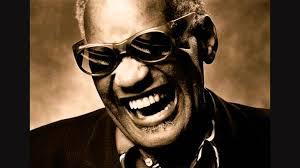
Jazz albums by Charles include The Great Ray Charles (1957), for example. Along with vibraphonist Milt Jackson, he collaborated on the albums Soul Brothers (1958) and Soul Meeting (1961). By 1958, he was not only performing in important black venues like New York’s Apollo Theater, but also at bigger events like Carnegie Hall and the Newport Jazz Festival, where his debut live CD was captured. He hired the Cookies, a female singing group, and changed their name to the Raelettes. On August 3, 1958, at the Shrine Auditorium, Charles and the Raelettes performed for the renowned Cavalcade of Jazz concert organized by Leon Hefflin Sr.
Little Willie John, Sam Cooke, Ernie Freeman, and Bo Rhambo were the other featured performers. Sammy Davis Jr. attended the Miss Cavalcade of Jazz beauty pageant to announce the winner. The top four well-known disc jockeys from Los Angeles performed during the event.
With the publication of “What’d I Say,” which incorporated gospel, jazz, blues, and Latin music, Charles achieved the height of his fame at Atlantic. Charles claimed that he came up with the idea while playing with his band at nightclubs. Although some radio stations forbade the song due to its sexually explicit lyrics, it ended up becoming Charles’ first top-ten pop hit. In 1959, it peaked at No. 1 on the R&B chart and No. 6 on the Pop list of Billboard.
Later that year, he released his first country song (a cover of Hank Snow’s “I’m Movin’ On”) and cut three more albums for the label: a jazz album called The Genius After Hours in 1961; a blues album called The Genius Sings the Blues in 1961; and a big band album called The Genius of Ray Charles in 1959, which peaked at No. 17 and became his first Top 40 album.
1959–1971: Crossover success
When Charles’ contract with Atlantic expired in 1959, he received record agreements from numerous major labels. He chose not to extend his contract with Atlantic, and in November 1959, he signed with ABC-Paramount In comparison to other musicians at the time, he was given a more lenient contract by ABC, which gave him a $50,000 (US$501,941 in 2022 dollars) yearly advance, larger royalties, and ultimate ownership of his master tapes—a extremely valuable and lucrative arrangement at the time.
Charles had received praise for his innovative compositions during his time at Atlantic, but by the time the largely instrumental jazz album Genius + Soul = Jazz was released in 1960 for ABC’s subsidiary label Impulse!, he had given up writing in favor of becoming a cover artist, adding his eccentric arrangements to already-existing songs.
Charles garnered widespread recognition and four Grammy Awards, including two for “Georgia on My Mind” (Best Vocal Performance Single Record or Track, Male and Best Performance by a Pop Single Artist). It was his first number-one song for ABC-Paramount in 1960. The song was Charles’ first collaboration with Sid Feller, who also produced, orchestrated, and led the recording. It was written by Stuart Gorrell and Hoagy Carmichael. In 1979, Georgia adopted Charles’ version of the song as its official anthem. Charles’ performance of the song contributed to its elevation to the status of an American classic.
The follow-up song, “Hit the Road Jack,” penned by R&B singer Percy Mayfield, garnered Charles another Grammy.
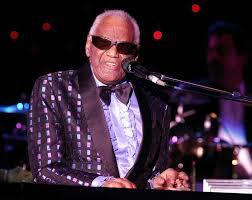
Charles became one of the few black performers to make the transition into mainstream pop with such a high degree of creative autonomy by the end of 1961 after expanding his small road outfit to a big band, partially in reaction to rising royalties and traveling costs. During a performance tour in November 1961, though, a police search of Charles’ hotel room in Indianapolis, Indiana, resulted in the finding of heroin in the medical cabinet, temporarily putting an end to his popularity. As a result of the police’s lack of a valid search warrant, the matter was ultimately abandoned, and Charles quickly turned back to music.
The pilot of Charles’ jet had a near-fatal encounter in the early 1960s while flying from Louisiana to Oklahoma City when the plane’s glass became covered in ice due to snow and the pilot’s neglect to utilize the defroster. Before being eventually able to see through a little portion of the glass and land the jet, the pilot did a few circles in the air. Charles gave the incident a supernatural explanation, saying that “something or someone which instruments cannot detect” was in charge of making the tiny crack in the ice on the windshield that eventually allowed the pilot to land the plane without incident.
Country music entered the mainstream of popular music with the release of the 1962 album Modern Sounds in Country and Western Music and its follow-up, Modern Sounds in Country and Western Music, Vol. 2. Charles’ cover of the Don Gibson song “I Can’t Stop Loving You” spent five weeks atop the Pop chart, ten weeks atop the R&B chart, and landed him his lone number-one single in the UK. He established his record company, Tangerine, in 1962, and ABC-Paramount distributed and promoted it. : 248: 213-16 Both “Busted” (US No. 4) and “Take These Chains from My Heart” (US No. 8) were significant mainstream songs for him in 1963. After a heated argument, Margie Hendrix was expelled from the Raelettes in 1964.
Charles’s career was once again put on hold in 1964 after he was detained for heroin possession a third time. To escape going to jail, he consented to attend a recovery center. He eventually quit smoking at a clinic in Los Angeles. Following a year of parole, Charles returned to the charts in 1966 with a string of singles he co-wrote with Ashford & Simpson and Jo Armstead, including the dance songs “I Don’t Need No Doctor” and “Let’s Go Get Stoned,” which became his first number-one R&B success in some years.
The country singer Buck Owens’ song “Crying Time,” which Charles covered, peaked at No. 6 on the pop chart and helped him win a Grammy Award the following March. Another song he recorded, “Here We Go Again,” reached the top twenty in 1967.
1971–1983: Commercial decline
However, Charles’ resurgence on the charts was short-lived, and by the 1970s, radio stations hardly ever played his music. Charles’ radio appeal was diminished by the emergence of psychedelic rock and tougher styles of rock and R&B music, as well as by his decision to record pop standards and interpretations of current rock and soul songs because the money he made from owning his master tapes removed the incentive to create new music. Charles maintained a busy recording career despite this. Between 1968 and 1973, the majority of his records elicited significant reactions from both fans and reviewers, who either embraced or denounced them. His albums during this time, especially 1972’s A Message from the People, shifted toward the then-current progressive soul sound.
A Message from the People featured a series of protest songs on poverty and civil rights as well as his distinctive rendition of “America the Beautiful” with gospel influences. Because his rendition of “America the Beautiful” differed so significantly from the song’s original version, Charles frequently faced backlash for it. Ray had to take care of Charles Wayne Hendrix when his mother Margie Hendrix passed away on July 14, 1973, at the age of 38. Her official cause of death is still a mystery.
Charles departed ABC Records in 1974 and started his label, Crossover Records, where he made many records. Stevie Wonder’s smash “Living for the City” was covered in 1975, which later assisted Charles in winning another Grammy. He rejoined Ahmet Ertegun and re-signed with Atlantic Records in 1977. He recorded the album True to Life for the company and stayed with them until 1980. However, the company had now started to prioritize rock talents, and some of their well-known soul performers, like Aretha Franklin, had started to go by the wayside. He hosted the NBC television program Saturday Night Live in November 1977.
When his rendition of “Georgia on My Mind” was named the official song of Georgia in April 1979, Charles gave a tearful performance of the song on the floor of the Georgia legislature. Charles appeared in the musical movie The Blues Brothers in 1980. Charles was condemned for playing at the Sun City resort in South Africa in 1981 during an international boycott in opposition to that nation’s apartheid policies, even though he had prominently backed Martin Luther King Jr. and the American Civil Rights Movement in the 1960s. Later, he justified his decision to play there, claiming that while he was there, the crowd would blend.
1983–2004: Later years
Charles entered into a contract with Columbia in 1983. He released some country albums and had successful singles in duets with artists like Dee Dee Bridgewater (“Precious Thing”), Hank Williams Jr., Chet Atkins, B. J. Thomas, Mickey Gilley, and George Jones (“Seven Spanish Angels”). He was also a lifelong friend of Willie Nelson.
Charles took part in the music video and recording of the charity single “We Are the World” by the supergroup United Support of Artists (USA) for Africa in 1985.
He took part in the Sanremo Music Festival for the first time in 1990 with the Toto Cutugno song “Good Love Gone Bad.”
Before the release of his first album for Warner, Would You Believe, singer Chaka Khan and longtime friend Quincy Jones’ cover of the Brothers Johnson’s “I’ll Be Good to You” reached number one on the R&B chart in 1990, earning Charles and Khan a Grammy for their collaboration? Before this, Charles had a comeback on the pop charts with the duet of “Baby Grand” with Billy Joel.
He covered “Itoshi no Ellie” by the Southern All Stars for a Japanese TV commercial for Suntory in 1989, and it was released there under the name “Ellie My Love,” where it peaked at No. 3 on the Oricon chart. During the Italian singer Zucchero Fornaciari’s promotional tour for Oro Incenso & Birra that same year, he was a special guest at the Arena di Verona.
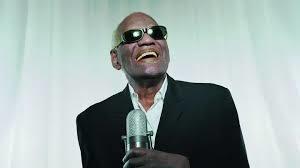
Charles made an appearance in advertisements for the New Jersey Lottery’s “For every dream, there’s a jackpot” campaign in 2001–2002.
He was the featured performer at the White House Correspondents’ Association Dinner in Washington, D.C. in 2003, which was attended by Condoleezza Rice, Colin Powell, Laura Bush, and President George W. Bush.
In 2003, Van Morrison was inducted into the Songwriters Hall of Fame. Charles gave him the Morrison Award and the two sang “Crazy Love” together (the performance can be heard on Morrison’s 2007 CD The Best of Van Morrison Volume 3). The songs “Georgia on My Mind” and “America the Beautiful” were played by Charles in 2003 in Washington, D.C. at a televised annual banquet of electronic media journalists. On April 30, 2004, he made his last public appearance at the dedication of his recording studio as a Los Angeles historic monument.
Ray Charles Legacy
Influence on the music industry
One of the most renowned voices in American music belonged to Charles. Henry Pleasants, a musicologist, said the following:
Word masters like Sinatra and Bing Crosby before him. Ray Charles is a pro at creating sound. His recordings reveal a remarkable variety of slurs, glides, turns, shrieks, wails, breaks, shouts, screams, and hollers, all expertly regulated by inspired musicianship and tethered to inventive subtleties of harmony, dynamics, and rhythm. It is either the singing of a guy whose vocabulary is too limited to adequately describe what is on his mind and in his heart, or it is the singing of a person whose emotions are too strong to be adequately expressed in words or conventional melodies.
You can’t hear it from him. Not even he can sing it to you. He must shout at you or call out to you in a way that conveys exaltation or anguish. The message is primarily communicated through the voice, with only a little help from the text or the notated music.
According to Pleasants, Ray Charles is frequently referred to be a baritone. His speaking voice and the difficulty he has in singing a well-known ballad’s high E and F both support this claim. However, when under pressure, the voice changes in some way. In gospel or blues music, he can and does sing for long stretches in the high tenor range of A, B flat, B, C, and even C sharp and D, at times in full voice, at other times in an ecstatic head voice, and at other times in falsetto.
He continues above high C in falsetto to E and F. He hits an astounding B flat on one outstanding song, “I’m Going Down to the River,” and his whole range, including the falsetto extension, is at least three octaves.
As highlighted by Jon Pareles, he had an impact on many hugely famous musicians, including Elvis Presley, Aretha Franklin, Stevie Wonder, Van Morrison, and Billy Joel. He also had success in the rhythm & blues and jazz genres. James Booker, Steve Winwood, Richard Manuel, and Gregg Allman are some other singers who have acknowledged the impact of Charles on their approaches. The smash songs he recorded for Atlantic in the middle of the 1950s “mapped out everything that would happen to rock ‘n’ roll and soul music in the years that followed,” claims Joe Levy, a music editor for Rolling Stone.
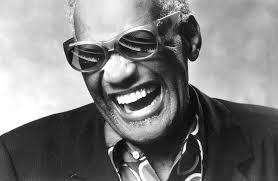
Roger Waters, a member of Pink Floyd, also cited Charles as an influence when he said to the Turkish daily Hürriyet: “I was approximately 15 at the time. We were listening to jazz in the middle of the night with friends. Ray Charles’ rendition of “Georgia on My Mind” was playing. Then I reflected, “One day if I can simply help some others feel one-twentieth of what I am feeling right now, it will be enough for me.
The biography Ray, starring Jamie Foxx as Charles, was released in October 2004. It depicts his life and career from the mid-1930s through 1979. For the part, Foxx received the 2005 Academy Award for Best Actor.
Ray Charles Awards and honors
Ray Charles received the Golden Plate Award and the Academy of Achievement gold medal in 1975 along with his induction into the American Academy of Achievement.
Charles was among the first artists from the state to be admitted to the Georgia Music Hall of Fame in 1979. Georgia designated his rendition of “Georgia on My Mind” as its official state song.
He received a star on the Hollywood Walk of Fame in 1981.
He was among the first people to be inducted into the Rock and Roll Hall of Fame at its opening ceremony in 1986. In 1986, he was also awarded the Kennedy Center Honors.
From his 37 nominations, Charles took home 17 Grammy Awards. He received the Grammy Lifetime Achievement Award in 1987.
During the UCLA Spring Sing in 1991, he received the George and Ira Gershwin Award for Lifetime Musical Achievement in addition to being inducted into the Rhythm & Blues Foundation.
He received an honorary doctor of fine arts degree from the University of South Florida in 1990.
He received the National Medal of Arts in 1993. Together with Ravi Shankar, he received the Polar Music Prize in 1998 in Stockholm, Sweden. His induction into the National Black Sports & Entertainment Hall of Fame took place in 2004. Charles was honored during the 2005 Grammys.
Charles was given the Candle Award for Lifetime Achievement in Arts and Entertainment in 2001 by Morehouse College, and later that year he was awarded an honorary doctor of humane letters. “To fund, educate, and inspire the next generation of musical pioneers,” Charles gave Morehouse $2 million.
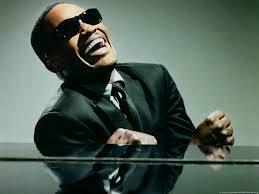
Charles received an honorary degree from Dillard University in 2003, and after his passing, he gifted the school with the nation’s first professorship of African-American culinary history.
On his 74th birthday, which fell on September 22, 2004, Ray Charles was remembered with a Google Doodle. It was one of the earliest birthday Doodles.
The Ray Charles Performing Arts Center and Music Academic Building, a 76,000 square foot (7,100 square meters), $20 million building, opened at Morehouse College in 2010.
On September 23, 2013, the United States Postal Service released a forever stamp in Charles’ honor as a part of its Musical Icons series.
Charles was honored with a Rhythm and Blues Music Hall of Fame induction in 2015.
Barack Obama, the president of the United States, declared in 2016 that Ray Charles’ rendition of “America the Beautiful” would always remain in his opinion the best patriotic song ever performed.
After Charley Pride (2000) and Deford Bailey (2005), Charles was the third African-American to be posthumously elected into the Country Music Hall of Fame in 2022. Additionally, he was the 13th individual to be honored in the Rock and Country Halls of Fame.
Ray Charles’s Contribution to the Civil Rights Movement
The Albany, Georgia-born musician was scheduled to perform at a dance at Bell Auditorium in Augusta on March 15, 1961, not long after the release of the hit song “Georgia on My Mind” (1960), but canceled the performance after learning from Paine College students that the larger auditorium dance floor would be restricted to whites while blacks would be required to sit in the Music Hall balcony. After informing the public of his decision to cancel, Charles left town right away. However, the promoter later filed a lawsuit against him for breach of contract, and on June 14, 1962, Charles was found guilty and ordered to pay a $757 fine in Fulton County Superior Court in Atlanta.
The following year, on October 23, 1963, Charles and his backup singers, the Raelettes, did play at a concert in a segregated Bell Auditorium, as shown in the 2004 movie Ray. In Albany, Georgia, Ray Charles Plaza was unveiled on December 7, 2007, and it featured a rotating, illuminated bronze statue of Charles playing the piano.
The Ray Charles Foundation
The Ray Charles Foundation was established in 1986 to provide monetary support to institutions and organizations engaged in the study of hearing problems. Its name was changed from The Robinson Foundation for Hearing Disorders in 2006, and since then, it has donated money to several organizations dedicated to the study and treatment of hearing loss.
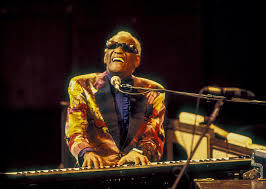
The foundation was established with the following goals in mind: “to administer funds for scientific, educational, and charitable purposes; to encourage, promote, and educate through grants to institutions and organizations as to the causes and cures for diseases and disabilities of the hearing impaired; to support organizations and institutions in their social educational and academic advancement of programs for the youth; and to carry on other charitable and educational activities associated with these goals.”
Benedict College, Morehouse College, and other universities are among the recipients of gifts. The foundation has taken legal action against receivers of donations who do not use the money in line with its mission statement, such as Albany State University, which was forced to return a $3 million donation after not using the money for more than ten years. The Ray Charles Memorial Library, which was established on September 23, 2010, the day before he would have turned 80, holds the foundation’s executive offices in the historic RPM International Building, which was once the home of Ray Charles Enterprises.
The library was established to “provide an avenue for young children to experience music and art in a way that will inspire their creativity and imagination” and is not generally accessible to the general public because its primary mission is to educate large groups of underprivileged youth and provide art and history to those who do not have access to such materials.
Ray Charles’s Personal Life
After losing his virginity to a woman of roughly 20 years old when he was 12 years old, Charles claimed in his 1978 autobiography Brother Ray: Ray Charles’ Own Story that he developed an addiction to women. “The two truly addictive habits I’ve known are smoking cigarettes and doing smack, or heroin. You could add women, he suggested. “Women are the focus of my passion, both now and when I was younger. I can’t just let them be,” he continued.
Ray Charles Relationships and Children
After losing his virginity to a woman of roughly 20 years old when he was 12 years old, Charles claimed in his 1978 autobiography Brother Ray: Ray Charles’ Own Story that he developed an addiction to women. “The two truly addictive habits I’ve known are smoking cigarettes and doing smack, or heroin. You could add women, he suggested. “Women are the focus of my passion, both now and when I was younger. I had to stay with them. Charles had two marriages. His second marriage lasted 22 years, while his first lasted less than a year. Charles had several relationships with women throughout his life and fathered twelve kids with them.
He wed Eileen Williams for the first time on July 31, 1951, and they were married till 1952.
In 1954, he met Della Beatrice Howard Robinson in Texas; Charles referred to her as “Bea”. On April 5 of the following year, 1955, they got married. Ray Charles Robinson Jr., their first child together, was born in 1955. Charles was playing a gig in Texas, so he wasn’t in town for the birth. David and Robert, the couple’s other two sons, were born. In View Park, California, they reared their kids. Charles believed that Della suffered during their marriage as a result of his heroin addiction. After 22 years of marriage, she filed for divorce in 1977 after the marriage had deteriorated due to his drug use, adulterous encounters while on tour, and unpredictable temperament.
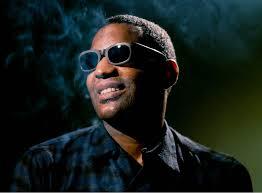
Charles had a six-year relationship with Margie Hendrix, a former Raelett, and the two gave birth to Charles Wayne in 1959. Renee, a daughter, was born in 1961 as a result of his romance with Mae Mosley Lyles. Sheila Raye Charles, a daughter of Sandra Jean Betts, was born to Charles in 1963. Sheila Raye, a singer/songwriter like her father, passed away on June 15, 2017, due to breast cancer. Charles had a child in 1977 with Arlette Kotchounian, a Parisian he had first met in 1967. Norma Pinella was his longtime lover and girlfriend at the time of his passing.
In total, Charles had 12 kids with 10 different women.
- Evelyn Robinson, born in 1949 (daughter of Louise Flowers)
- Ray Charles Robinson Jr., born May 25, 1955 (son with wife Della Bea Robinson)
- David Robinson, born in 1958 (son with wife Della Bea Robinson)
- Charles Wayne Hendricks, born on October 1, 1959 (son of Margie Hendricks, one of the Raelettes)
- Robert Robinson, born in 1960 (son with wife Della Bea Robinson)
- Renee Robinson, born in 1961 (daughter with Mae Mosely Lyles)
- Sheila Robinson, born in 1963 (daughter with Sandra Jean Betts)
- Reatha Butler, born in 1966
- Alexandra Bertrand, born in 1968 (daughter of Mary-Chantal Bertrand)
- Vincent Kotchounian, born in 1977 (son of Arlette Kotchounian)
- Robyn Moffett, born in 1978 (daughter of Gloria Moffett)
- Ryan Corey Robinson den Bok, born in 1987 (son of Mary Anne den Bok)
Ten of Charles’ twelve children showed up for the family luncheon he hosted for them in 2002. He informed them that he was terminally ill and that each of the children would get $500,000 over the following five years through trusts.
Ray Charles Drug abuse and legal problems
Charles used marijuana for the first time at the age of 18 while playing in the McSon Trio. He was keen to try it because he believed marijuana helped artists express their creativity and produce music. Later, he developed a 17-year heroin addiction. The first time Charles was detained was in 1955 when he and his bandmates were discovered in the backstage area with loose marijuana and drug-related equipment, such as a charred spoon, syringe, and needle. His drug use continued unabated as he rose in success and wealth; the arrest did not affect it.
Charles was detained in 1958 for having drugs and equipment for dispensing heroin on a corner in Harlem.
On November 14, 1961, while awaiting a performance in an Indiana hotel room, Charles was detained on drug charges. Heroin, marijuana, and other goods were taken by the detectives. When he was 31, Charles claimed to have been an addict since he was 16 years old. Because of how the evidence was gathered, the case was thrown out, but Charles’ circumstances did not change until a few years later.
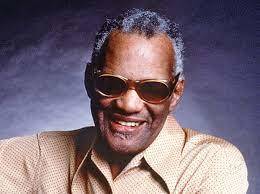
Charles was detained for heroin possession at Boston’s Logan Airport on Halloween in 1964. He entered St. Francis Hospital in Lynwood, California, after deciding to stop using heroin, where he through four days of complete withdrawal. After a self-imposed stay, he admitted guilt to four drug-related crimes. The judge sent Charles to McLean Hospital in Belmont, Massachusetts, despite the prosecutors’ requests for two years in prison and a large fine. The judge heard Dr. Hacker, Charles’ psychiatrist, describe Charles’ commitment to stop using drugs. If Charles agreed to routine check-ups by government-appointed doctors, the judge would have delayed the verdict for a year. Charles was given a five-year suspended sentence, four years of probation, and a $10,000 fine when he appeared in court again.
With the tracks “I Don’t Need No Doctor” and “Let’s Go Get Stoned” and the publication of Crying Time, his first album after kicking his heroin addiction in 1966, Charles responded to the story of his drug usage and reform.
Ray Charles’s Chess hobby
Charles took chess very seriously. He visited with psychiatrist Friedrich Hacker de, who taught him how to play chess, three times a week as part of his therapy after quitting heroin. A unique board with raised squares and holes for the pieces was utilized by him. He made light of the topic, joking, “You can’t cheat in Chess… I’m gonna see that!” when asked if anyone tried to cheat against a blind guy. He referred to Willie Nelson as “my chess partner” at a 1991 concert. He competed against former U.S. champion and American grandmaster Larry Evans in 2002 but lost.
Ray Charles Death
Charles underwent successful hip replacement surgery in 2003 and was about to resume touring when he started to experience new health issues. On June 10, 2004, at the age of 73, he passed away at his home in Beverly Hills, California, from complications brought on by liver failure. Numerous musicians attended his funeral, which was held on June 18, 2004, at the First African Methodist Episcopal Church in Los Angeles. At the funeral, B.B. King, Glen Campbell, Stevie Wonder, and Wynton Marsalis all sang tribute songs. Inglewood Park Cemetery is where he was laid to rest.
B.B. King, Van Morrison, Willie Nelson, James Taylor, Gladys Knight, Michael McDonald, Natalie Cole, Elton John, Bonnie Raitt, Diana Krall, Norah Jones, and Johnny Mathis are among the artists who performed duets on his final album, Genius Loves Company, which was released two months after his passing. Eight Grammy Awards were given to the album, including Best Pop Vocal Album, Album of the Year, Record of the Year, Best Pop Collaboration with Vocals (“Here We Go Again” with Norah Jones), and Best Gospel Performance (“Heaven Help Us All” with Gladys Knight).
He also earned recognition for his duets with B.B. King and Elton John. A duet of “Over the Rainbow” by Harold Arlen and E. Y. Harburg, performed on the album with Johnny Mathis, was played during Charles’ funeral.
Ray Charles Discography
Charles has a lengthy and extremely complex discography. Around 60 original albums and more than 200 compilation albums are listed by AllMusic, while Robert Christgau, a music writer, observed that there may be more. Many of the masters that Charles started to own after 1960 were not digitally reissued, which prompted the Atlantic sister label Rhino Entertainment to concentrate on rereleasing his music from the mid-to-late 1950s. At least 20 record labels have released nearly identical compilations of Charles’ songs from before Atlantic Records. The discography of Charles has been dubbed a “monumental mess” by Christgau, who also stated that “any map of his oeuvre must be personal and provisional.”
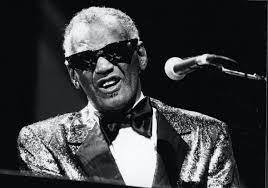
Ray Charles Trivia
He had numerous girlfriends and two marriages. 20 grandchildren and five great-grandchildren were among his twelve children.
Since age 6, glaucoma has caused blindness.
He was hired to drive a car for a commercial, and he did so in the Death Valley desert without any help. He rated it as one of his most thrilling experiences to date.
He was a chess enthusiast who was notorious for setting up matches between sets and performances despite being blind.
Before quitting heroin cold turkey in 1965 following an arrest at the Boston airport, he battled a heroin addiction for nearly 20 years.
was a fan of the singer Nat ‘King’ Cole and even tried to emulate him during his early performances. This ensured that he would have work to do before developing his style.
A feature film starring Jamie Foxx and formerly titled “Unchain My Heart, the Ray Charles Story” (renamed for distribution as Ray (2004)) was being finished when he passed away.
Reatha Butler, Alexandra Bertrand (the daughter of Mary-Chantal Bertrand), Robyn Moffett (the daughter of Gloria Moffett), Evelyn Robinson (the daughter of Louise Mitchell), Raenee Robinson (the daughter of Mae Mosely Lyles), Sheila Robinson (the daughter of Sandra Jean Betts), and Vincent Kotchounian (the son of ‘Arlette Ko) are among the 12 children he had with Della Bea Robinson.
Had a hip replacement in the fall of 2003, forcing him to postpone his first performance on the road in 53 years.
Many blind artists, including Ronnie Milsap and Terri Gibbs, were motivated to pursue careers by him.
He has long been a supporter of Israel and was honored as “Man of the Year” in 1976 by B’nai Brith.
He was the first performer to fuse gospel and rhythm and blues.
He was one of the few black artists to have a No. 1 single on the country charts of Billboard magazine in 1985 with the duet “Seven Spanish Angels” with Willie Nelson.
In Rolling Stone’s list of the 100 Greatest Rock ‘n’ Roll Artists, he came in at number 10.
As a young performer, he dropped the “Robinson” from his name to prevent being confused with boxer Sugar Ray Robinson.
as one of the original 10 inductees into the Rock and Roll Hall of Fame in 1986, along with Jerry Lee Lewis, James Brown, Chuck Berry, and Elvis Presley. At the 1987 Grammy Awards, he also earned the Recording Academy’s Lifetime Achievement Award.
He was given the Congressional Gold Medal after legislation to that effect was submitted to the House of Representatives.
His final recording was the Grammy-nominated duet with its creator Elton John, “Sorry Seems to Be the Hardest Word,” from the album “Genius Loves Company” (2004).

With “Georgia on My Mind” (1960), “Hit the Road Jack” (1961), and “I Can’t Stop Loving You” (1962), he achieved three #1 pop songs.
ranked second-best rock singer of all time in a 2008 Rolling Stone magazine poll.
In 1998, he received the Polar Music Prize, given by the Royal Swedish Academy of Music.
on November 24, 2003, had hip replacement surgery in Los Angeles, California.
Not to be confused with Ray Charles, who served as the choir conductor for The Ray Charles Singers on Perry Como’s Kraft Music Hall from 1948 until 1963. Three episodes of “The Perry Como Show” from 1958 to 1961 had Ray as a performer with “The Raelettes” and The Ray Charles Singers as his chorus. The song “What’d I Say” was one of them. The US Public Television Special “Aretha Franklin Presents Soul Rewind” (2010) (TV) features the 1961 performance.
depicted on a non-denominated (“forever”) Music Icons series commemorative stamp from the USA released on September 23, 2013. The price on the issuance date was 46. Ceremonies marking the first day of issuance were held in Atlanta, Georgia, and Los Angeles, California.
He received harsh criticism in 1981 for performing in apartheid-era South Africa.
A private, historically black university in Wilberforce, Ohio, Wilberforce University conferred upon him an honorary degree of humane letters.
both the Blues Hall of Fame and the Georgia Music Hall of Fame inducted him in 1979 and 1982, respectively.
In 1993, the National Endowment of the Arts in Washington, D.C., presented him with the American National Medal of the Arts.
On December 16, 1981, he received a Star for Recording on the Hollywood Walk of Fame at 6777 Hollywood Boulevard in Hollywood, California.
became the big winner at the 47th Grammy Awards in Los Angeles, taking home eight awards for his final album “Genius Loves Company” (which won Album of the Year) and his song “Here We Go Again” with Norah Jones (which won Record of the Year).
performed at both Bill Clinton’s first inauguration in 1993 and Ronald Reagan’s second inaugural in 1985.
As the creator of Tangerine Records (1962–1973), he was one of the first vocalists to have his master recordings.
His 1962 pop smash “I Can’t Stop Loving You” peaked at #1 on Billboard’s Hot 100 charts for five weeks, making it his most well-known song in the country.
Jamie Foxx portrayed this character in the movie Ray from 2004.
Jason Alexander and Bruce Springsteen, two musicians and actors, were both born on the same day.
in the British artist Joe Jackson’s song “Go for It” where it is mentioned.
Hostyle Gospel, a Christian Hip Hop group, sampled I Believe to My Soul by Ray Charles for their mixtape album The Calm.
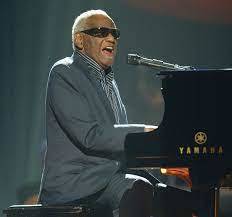
Who Was Ray Charles?
Legendary musician Ray Charles is credited with creating soul music in the 1950s. Charles, who is frequently referred to as the “Father of Soul,” fused blues, gospel, and jazz to produce seminal songs like “Unchain My Heart,” “Hit the Road Jack,” and “Georgia on My Mind.” He passed away in 2004, leaving a profound legacy in modern music.
What is Ray Charles most famous for?
In the 1950s, Ray Charles, commonly referred to as the “Genius” and the “Father of Soul Music,” was a well-known performer. Jazz, blues, and gospel were just a few of the genres Ray experimented with and mixed to create captivating music.
What is Ray Charles’s full name?
Ray Charles, also known as Ray Charles Robinson, was an American pianist, singer, songwriter, and bandleader who was best known for being dubbed “the Genius.” Ray Charles was born in Albany, Georgia, on September 23, 1930, and passed away in Beverly Hills, California, on June 10, 2004. Charles is credited with helping to create soul music, a genre based on
Who did Ray Charles leave his money to?
According to reports, Charles left $500,000 to each of his 12 children and granted Ray Charles Enterprises the rest of his estimated $75 million fortune as well as the music licensing rights. After Charles’ death, Ray Charles Enterprises was absorbed by the foundation.
Where was Ray Charles born?
He began playing the piano before the age of five. Ray Charles Robinson was born on September 23, 1930, in Albany, Georgia. He was raised in Greenville, Florida. He developed glaucoma at the age of six, which eventually rendered him blind.
Why is Ray Charles called the genius?
He became one of the most adored musicians of all time thanks to his distinctive voice and passionate performance. Charles became one of the most inventive and significant musicians in American music thanks to his genius for combining gospel, rhythm and blues, soul, blues, jazz, country, rock, and pop.
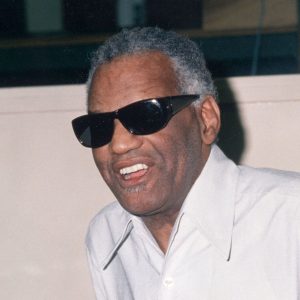
Why is Ray Charles a hero?
In states like Georgia, he contributed to the end of segregation. Ray’s ability to play the piano while being blind was highly inspiring. Throughout his career, he released amazing songs, including the song “Georgia on My Mind,” which has now become Georgia’s anthem. He accomplished a lot more things for which he is still renowned.
Was Ray Charles a Millionaire?
In states like Georgia, he played a role in ending segregation. Because Ray could play the piano while being blind, he was immensely inspiring. Over the years, he released some fantastic music, including “Georgia on My Mind,” which has become Georgia’s national anthem. Other things he accomplished are still remembered for him.
Discover more from Labaran Yau
Subscribe to get the latest posts sent to your email.







